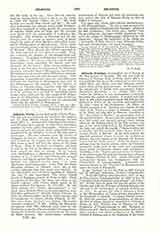

Seleucia Pieria, titular metropolis of Syria Prima. The city was founded near the mouth of the Orontes, not far from Mount Casius, by Seleucus Nicator about 300 ii. c. According to Pausanias, Damascene, and Malalas, there appears to have been previously another city here, named Palopolis. Seleucia was a commercial port of Antioch, Syria, with which it communicated by the Orontes; it was at the same time a naval port. The first colonists were the Greeks of Antigonia in Greece, also some Jews. It was taken and retaken by the Lagidae and the Seleucides until 219, when it again fell into the power of the kings of Syria. Then it obtained its freedom and kept it even to the end of the Roman occupation; it had long enjoyed the right of coinage. Of its famous men, Apollophanes, a physician of Antiochus (third century B.C.), is known, also Firmus who aroused Palmyra and Egypt against Rome in 272 A.D. The harbor was enlarged several times, e.g., under Diocletian and Constantius. Saint Paul and Saint Barnabas stopped at Seleucia (Acts, xiii, 4) but nothing indicates that they made any converts. In the Apocryphal Acts of Saint Ignatius of Antioch, this city is also mentioned. The oldest bishop known is Zenobius, present at Nica in 325. There is mention of Eusebius, the Arian, and Bizus in the fourth century, with twelve others found in Le Quien (Oriens Christianus, II, 777-780). In the sixth century the “Notitia episcopatuum” of Antioch, gives Seleucia Pieria as an autocephalous archbishopric, suffragan of Antioch (Echos d’Orient, X, 144); the diocese existed until the tenth century, and its boundaries are known (Echos d’Orient, X, 97). For some Latin titularies see Eubel, “Hierarchia catholica medii nevi”, I, 468. During the Byzantine occupation from 970, followed soon after by the Frankish occupation, Seleucia regained its importance; during the Crusades its port was known by the name of Saint Symeon. The Greek-Arabic schismatic patriarchate of Antioch had since the sixteenth century united the title of Seleucia Pieria to that of Zahleh in Lebanon.
The upper city, about eight miles in circumference, is still distinguishable. The site is now occupied by the two villages of Soulidieh and Kaboucie, inhabited by 800 Armenians. The lower city, smaller than the preceding one, was more thickly populated; there arose the village of Meghragagik, inhabited by 150 Ansariehs. Among the curiosities of the village are a necropolis of little interest, some irrigation works, and some fortifications very much damaged.
S. VAILHE

